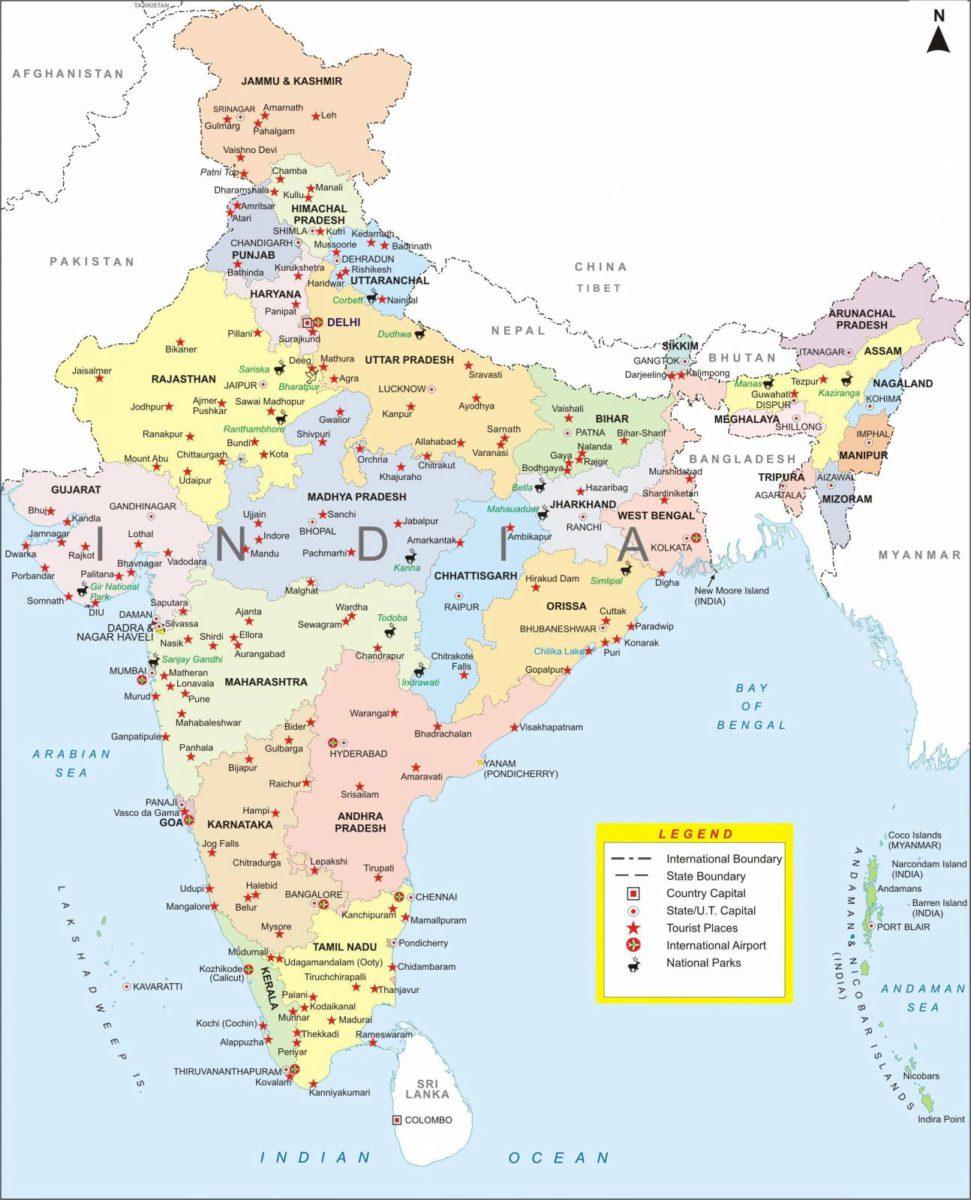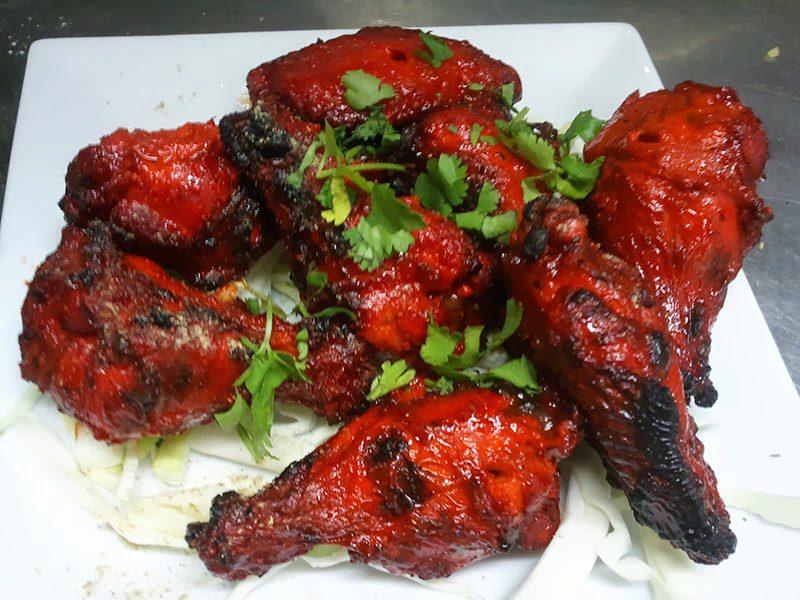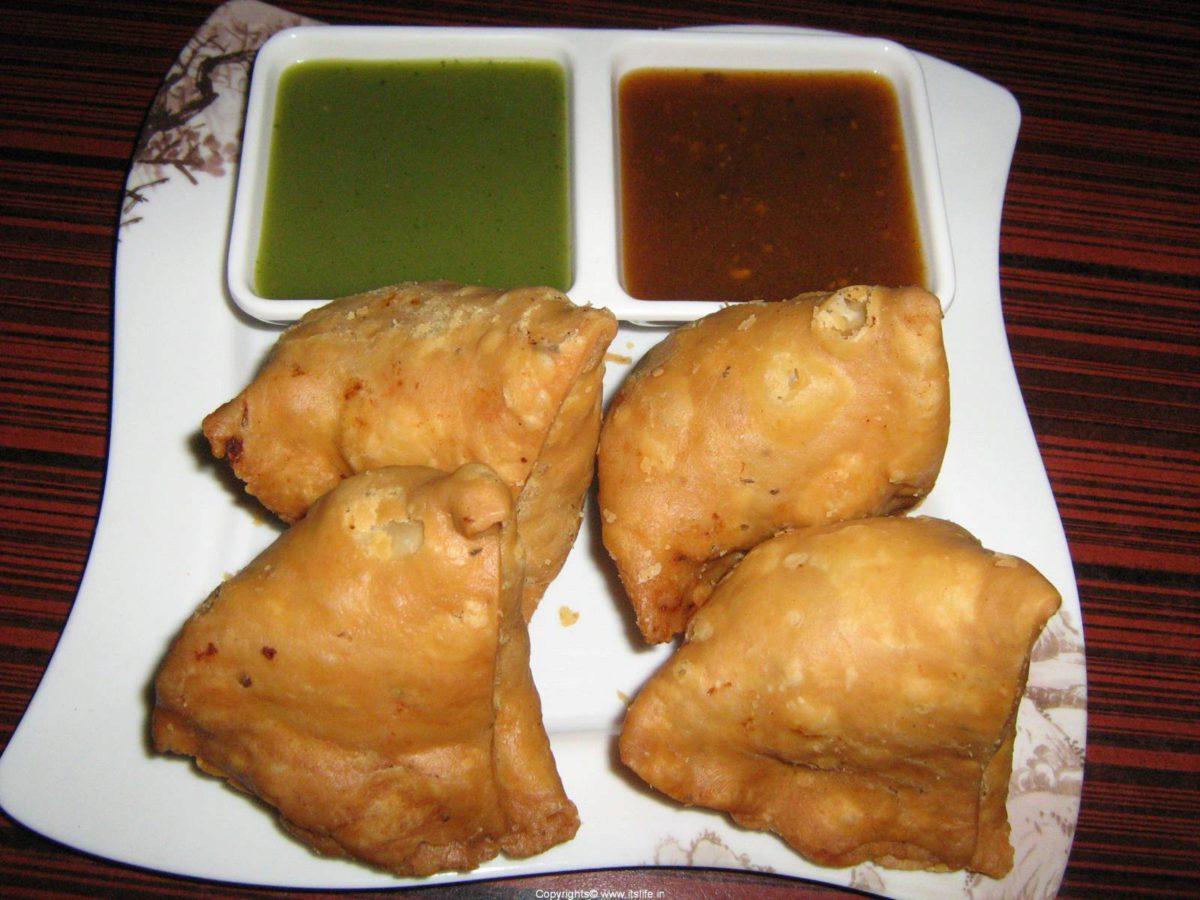Learn where and what to eat when it comes to Indian food in Atlanta from Indian foodie Prashant Khare.

In order to help the CoE community branch out and try new foods, we talked to two members of the CoE staff to get their insight on cuisine from their countries. Aerospace research engineer Prashant Khare rose to the challenge and supplied this extensive guide to Indian food. Click here for Jingfeng Wang's guide to Chinese food.
What part of India are you from and how did you end up at Georgia Tech?
I am from the north central part of India. It's a place called Sagar, which is about 550 km south of Delhi, just to give you an idea of where it is on a map. Even people in India don't usually know where it is.
I grew up there and did high school there, then moved to the south of India to go to college. Then I moved back up north to Delhi and worked there for a couple of years, then moved to Pennsylvania to go to grad school. I came here to do my PhD. I've been here since January of 2009, so about seven years. I'm now a research engineer.
Is there a lot of variation in Indian food from one region to another?
Definitely. When I moved from my home to go to college it was a move of 3000 km to the southernmost state in India, called Kerala. For the first semester I lost about 15 lbs. I couldn't eat anything because it was so different. Eventually I got used to it and then I found places where I could find something familiar. Food varies widely from region to region, even within a few hundred miles. In my state most people are wheat eaters. We are not rice eaters. We eat bread, a lot of vegetables, and some meat. In America you can find cuisines from all over the world, but when I grew up if you went out the food was similar to what we ate. If you were really stretching you might find some south Indian places. That was it in terms of diversity of food. but from region to region it was very different.
What type of meat did you eat growing up?
We primarily ate goat. Until I was in seventh or eighth grade it was the only meat I'd ever had. Then chicken became more popular and spread. I still prefer red meat because to me it has more taste.
How was meat served in your region?
Generally with curry, but let me explain something about curry. Curry is a leaf, or something with a gravy. There is a thing called curry powder or spice, but that is not what we called curry. Curry in Indian food is gravy — some sort of sauce that goes on food whether there is meat or not. Most meat had a gravy, often with a spice blend called masala, then you add to it. It cooks slow with a water base, tomato, or whatever. Meat day at our house was every Sunday. My mother doesn't eat meat, but she prepares it very well. She doesn't even touch it though.
What types of vegetables did you eat?
Our vegetables were based on the season. In the summer there were a variety of gourds, like water gourd. In the winter it was leafy vegetables like spinach, cabbage, and leafy greens like mustard leaves which are actually really good, even though many people here don't know you can eat them. During the three or four month monsoon season we ate corn.
Let me also explain Indian bread. There are four kinds of Indian bread based on how they are made. One is cooked on the pan with no oil. The second is on the pan with oil. The third is deep fried, and the fourth is in a clay oven.
The first kind is called roti. You eat it for lunch, dinner — everything. It's what most people eat. Parotta is pan fried with a little bit of oil. The third kind is puri. It is whole wheat flower and water dough. You make small shapes and put it in hot oil and it swells up. Bhatura is another kind of bread, made of a stretchier fried dough. A place called Gokul Sweets has a very good choli bhature.
What was so different about the food when you went to college?
Allow me to tell you a story. The first day of college my dad came with me to drop me off. It took about 48 hours to get there by train because of a storm and landslide. Finally we reached Calicut at four in the morning. The next morning we sought something to eat. We ordered some rice and a liquidy gravy called sambar. I'm used to eating long grain rice, or basmati rice. This rice was round and reddish brown in color. I took one spoonful and it was enough for me. My dad took three or four. That was my first day in that city. When we reached the dorm the food there was very good the first day because the parents were there. As soon as they left, the food situation fell apart. It was all rice and fish and some kind of green beans. There was a lot of coconut and coconut oil. I just couldn't eat it. The smell was unpleasant to me. Their vegetables were also very bland. When they weren't bland they were too spicy to eat.
I actually did like the fish there. I ate a lot of it, and after my first year in college I found an eatery for a different dorm with North Indian food, so that's where I ate for the rest of my college years.
Can you explain how the regions differ?
The people known for eating spicy food are generally from two states. One is Rajasthan, which is in the northwest of India and borders Pakistan. They eat a lot of spicy food. The other is the state of Andhra Padesh. They are known for eating very spicy food. It is just unbearable to me. Another difference is the speed at which food is cooked. All slow cooked food is good, and to me that is how it should be cooked. If it has to be cooked it should be cooked slow. That style comes primarily comes from Kashmir, and they use a lot of meat — lamb or goat. It's very good.
Then there's Indian fast food, which is called chaat. It's very popular in places where I lived. It's street food, and it can have a main ingredient, like a pan fried potato patty. Or it can be like a samosa. Then you would add some type of gravy, often made with chick peas, then you would add more spices and sauces. It's served on the street in leaves. It is one of the specialties from my state, but the problem is that other states think they know how to make it and they don't. I can't eat it if it is from anywhere else.
What are some of your favorite Indian restaurants in Atlanta?
I enjoy Zyka because I really like their tandoori chicken. If you want to eat roasted chicken Indian style it's the place to go. It's not exactly a hole in the wall, because everyone knows it's there, but it's self-serve. You order at a counter and then pick up your food. Their chicken is excellent..
Nearby on Dekalb Industrial is Gokul Sweets. They have a lot of snacks and sweets but they also have a food counter. Some snacks you could consider meals. It's vegetarian, and one thing I would recommend is a bread called parotta. It's huge, and one would be enough for most people. On the side you can order paneer. Saag paneer, which has spinach in it, is good and comes with a gravy. You can also order okra or chick peas, or whatever you want. What I really like though is the parotta.
In Alpharetta there is Tadka and Bamboo Garden. These restaurants are really the same place and are attached to each other. It's a full service restaurant and is maybe more upscale. It's good to hang out. I really like to go there on Sunday. They have a lunch buffet, and they have someone making street food from wherever. That adds variety, and you can't get that food in restaurants often.
They have very good dosa, which is a thin crispy bread. It's filled up with different things, but normally spiced potatoes. They can be small, or big enough to be called a family dosa.
Another option is Naan N' Curry in Duluth. If you want Indian meat this is a good place to go. They have no vegetables at all. It's meat and rice or meat and bread. They have chicken, goat, and beef. Naan is another type of bread — it's a type of tandoor bread similar to roti. They have stuffed naans that I like, and again, I enjoy their meat preparation.
Some people like Udupi Cafe. Udupi is a place on the west coast of southern India. It is known for its temples. This restaurant is vegetarian. I have only been there once but I would go again.
Most of the restaurants I've talked about are north Indian food. That includes food from different states, like Punjabi food. In terms of south Indian food, there's a popular restaurant in Decatur called Madras Mantra. I have heard it's very good. They are primarily south Indian.
There's another one called Madras Chettinaad in Alpharetta. They have a huge buffet, and they claim to be authentic south Indian food. I've been there and it is good.
Another place in Decatur which opened recently is Chai Pani. I went early on, and I wasn't impressed, but it is getting great reviews and it's a good place to hang out. They serve Indian fast food, so it is different.
Finally, there is Swapna. It's just off of I-75N and they have everything. Their vegetables are very good, including the gravy and curries. Like the other places, they have a lunch buffet. To me that's the best time to go so you can try different things. Good restaurants always have good samosa. To me that determines how good a place is. It is my favorite snack. It shouldn't look oily, it shouldn't look blistery, and it should open easily. I'm picky about filling. In my hometown everyone made the filling with potatoes. you can have a little bit of onion, but it's potatoes and maybe some spices. More often than not in America they always add peas, and it makes me mad. It gives people a bad idea about samosa. When they are done well samosas are delicious.
What are some side items or sides that you would suggest people try?
Pakora is any kind of vegetable battered with chickpea flower and deep fried. It's similar to onion rings, but with other vegetables. It's a great starter. Tandoori chicken is also a starter. Another popular one is called chicken 65. It's basically thinly breaded deep fried chicken. Paneer is another snack or side. It comes in all sorts of forms and is similar to tofu but it is softer and holds flavor. I like spinach paneer.
Are desserts popular in India?
Very popular. Good desserts come from Bengal on the eastern side of the country. A very popular one is called rasgulla. It is white and spongy. Another popular one which is similar is galub jamun. It's brown or darkish and in syrup. You eat it warm but eat rasgulla cool. Ras malai is also popular. It has a flat patty and the name comes from the words for cream and syrup. Jalebi is also good, and is kind of like funnel cake. It is only found in sweet shops. I don't have a sweet tooth, but people in India eat a lot of sweets, and they are very sweet. There's another type called barfi, which is a milk product. You take the milk, with the cream still in it, and you boil it down. Then you can add flavors to it, like nuts, coconut, or whatever. Laddu is very similar, but is spherical and is made with nuts.
How would you get someone hooked on Indian food?
My roommate went to Georgia Tech for undergrad, and he said he got hooked by eating naan. So if you like bread order a bunch of naan with different stuff. If you can find it go for choli bhature. It's deep fried bread but when it's done well there's no trace of oil. Choli is a chickpea gravy, so it's not too unusual. It's not too spicy. I also recommend going for a samosa — it's deep fried potatoes with bread. You can't go wrong with that. I'm not suggesting any vegetables, so maybe I'm not very health conscious, but I would order a samosa, then choli bhature, and follow it with ras malai for dessert. Tandoori chicken is another option for your meal. I hope I've given people ideas for things to try that would maybe be new to them.


